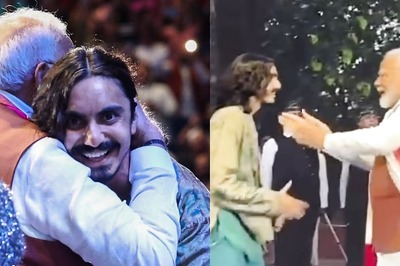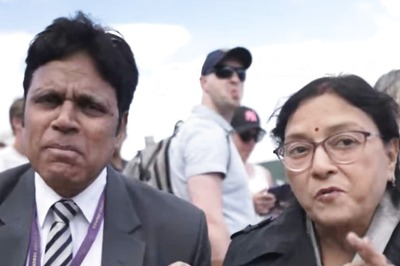
views
Even till a month ago, no one held out any hope for the Congress in the October 21 Haryana assembly poll. The Bharatiya Janata Party, led by chief minister Manohar Lal Khattar, was seen as a clear winner.
All set to cruise to an easy victory, the BJP’s claim that it would win 75 of the 90 assembly seats in Haryana had a ring of credibility about it. After all, the Congress was a house divided, did not have its team in place till a couple of weeks before the election and also lacked a coherent poll strategy.
Khattar, on the other hand, was perceived to be personally popular — a simple man, a person of integrity who led a fairly clean government. Not only did he score well on the governance front but Khattar also proved his political mettle by consolidating the non-Jat vote in favour of the BJP. As Khattar came into his own during the five years he was in power, his rise was hailed as the emergence of another Lal in Haryana in the footsteps of previous stalwarts like Devil Lal, Bansi Lal and Bhajan Lal.
However, when the election results started trickling in, everyone was taken aback. No one, including the Congress itself, expected the faction-ridden party to make such dramatic gains in such a short period. The BJP struggled to reach the half-way mark in the 90-member assembly while the Congress was snapping at its heels.
The newbie Jannayak Janta Party, led by Indian National Lok Dal chief OP Chautala’s estranged grandson Dushyant Chautala emerged as the kingmaker. It was not surprising that young Chautala was being wooed by both the BJP and the Congress as he clearly holds the key to the formation of the next government in Haryana.
Undoubtedly, the Congress is patting itself on the back for demonstrating that it is not a spent force. The party benefited from the simmering anger among the Jats, the dominant community which has for long wielded political and economic power in the state but was ignored by the ruling BJP. The Khattar government’s failure to deliver on its promise of quotas for the Jats, combined with the impact of the ongoing agrarian and economic crisis, went a long way in helping the Congress as an angry Jat community chose to repose its faith in it. Similarly, the JJP also benefited from the discontent in the Jat community.
However, the Haryana and the Maharashtra election results hold out important lessons for the Congress, provided its leadership is willing to learn from this experience. Lesson number one: the contrasting election results from the two states, once again, established the importance of nurturing and grooming strong regional leaders who can hold their own and are not necessarily dependent on the central leadership. The Congress was both invisible and leaderless in Maharashtra while the state unit was seriously undermined by factionalism.
Haryana, on the other hand, had former chief minister Bhupinder Singh Hooda, who had the added advantage of belonging to the dominant Jat community. While Hooda had a connect with the Jats, the last-minute appointment of Selja as president of Haryana Congress prevented the total consolidation of the non-Jats in favour of the BJP. As a Dalit, Selja was better placed to reach out to the scheduled castes.
Lesson number two for the Congress is that it must learn to take quick decisions. It is no secret that infighting was rampant in the party’s Haryana unit as there was all-round agreement that Selja’s predecessor Ashok Tanwar was ill-suited for this job and that he needed to be replaced at the earliest.
But the party in its true lackadaisical manner ignored the protests from the state cadre. Since former Congress president Rahul Gandhi had appointed Tanwar, the Nehru-scion was reluctant to remove him as it would be an admission that he had erred in picking him for this crucial task. Tanwar was finally replaced barely three weeks before the election and that too after Hooda threatened to leave the party.
It is a no-brainer that had the party leadership acted swiftly and given the new team sufficient time to plan and strategise for the election, the Congress could have been in a position to form the government in Haryana. Today, the Congress can only draw comfort from the fact that it succeeding in doubling its tally despite the paucity of time, faulty distribution of tickets and Tanwar’s exit and public tantrums.
And, finally, lesson number three for the Congress. It can safely be said that the party has, to a large extent, shed its dependence on the Gandhi family. Sonia Gandhi, who took over as party chief a couple of months ago, did not campaign in these state elections. Rahul Gandhi addressed only two rallies in Haryana and, from all accounts, was said to be a reluctant campaigner. Most senior leaders stayed away from the campaign, which was handled primarily by the state leaders.
The final outcome only reaffirmed that Rahul Gandhi made no significant contribution to the party’s turn-around in Haryana.
(The author is a senior journalist. Views expressed are personal)




















Comments
0 comment